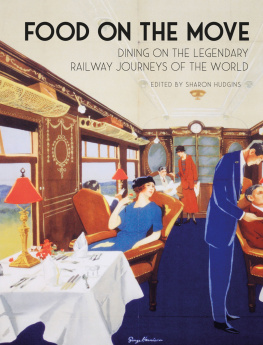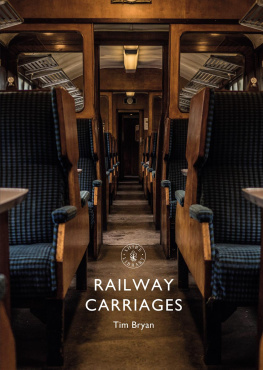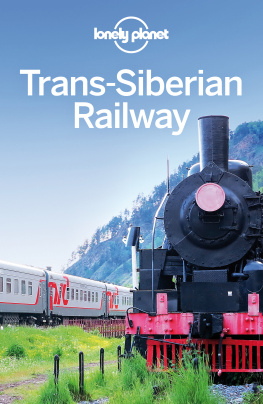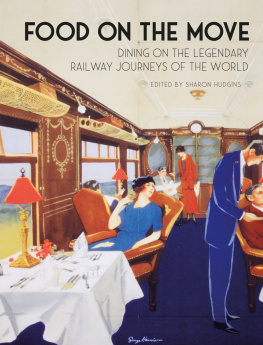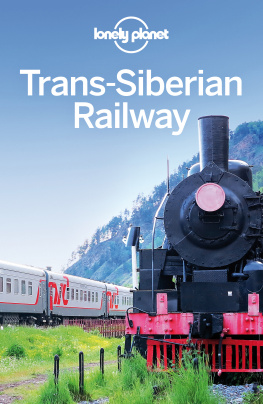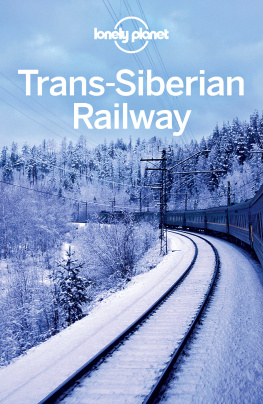Dining car on the Union Pacific Railroad, part of the first US transcontinental route. From The Graphic, January 1870.
FOREWORD
You could say that Sharon Hudgins and I met in the dining car. No, not in the way that Cary Grant and Eva Marie Saint meet in Alfred Hitchcocks thriller North by Northwest. We crossed paths in a more mundane setting, on the printed page. Both of us have devoted much of our creative energy to exploring and reporting on railway travel and dining car experiences, including the culinary practices (both common and unique) that we have encountered on trains, the delights and disappointments that we and other passengers have enjoyed or endured, and the recipes for dishes served on railway journeys. That longtime interest in whats going on in the kitchen lends realism and credibility to the story presented here and makes it well worth reading.
This book is a fascinating compendium of first-hand accounts of railway dining on an international scale, presented by an experienced cast of travel writers, cultural commentators and scholars, all of them rail fans. After all, taking a meal in the cars occurs on every continent (except Antarctica), everywhere intercity trains run. The practice has progressed from consuming roadkill along the tracks, to vendors peddling food to passengers on board trains and at station stops, to scheduled twenty-minute refreshment stops at pre-arranged sites, to the award-winning cuisine prepared and served on long-distance trains and luxury excursions. All of these various practices except serving roadkill continue today.
As editor of this book, Sharon Hudgins has brought a combination of experiences and perspectives to the task of assembling these accounts by eight different authors. The result is an informative and entertaining look at the ways in which railways and their passengers meet at the table to satisfy a basic human need food often in challenging circumstances. After reading this book, if you should travel on any of these railway routes yourself, you will know what to expect. But if you are only an armchair traveller, you can still experience the trip vicariously. And in either case, you can go into your own kitchen and recreate numerous railway dining experiences by preparing the recipes included in this book.
What, you might ask, is so different about railway dining? Consider the setting: a long, narrow dining room provided for by a teamof chefs working, in most cases, in a shorter, narrower kitchen. In that environment, between one hundred and three hundred meals (breakfast, lunch and dinner) must be prepared and served in three three-hour periods every day and while the entire environment is moving, too. All the ingredients must be on hand in adequate quantities. The chef cannot send a waiter next door, or off to the market, if the kitchen runs out of an ingredient. Unlike land-based eateries that have an established clientele with known dining preferences, the dining car has to serve children, business people, retirees, farmers, city dwellers, holiday-makers, and the occasional biker, cowboy or newlywed couple. I once shared a table at breakfast on Amtraks Empire Builder with a motion picture studio executive, a young woman fleeing an abusive husband, and a man on his way home after serving five years in prison, who recoiled in horror when the service attendant mentioned turkey bacon. Thats all they served us in prison, he explained, turkey bacon or turkey sausage.
Railways long ago devised several ways to address these challenges. Kitchens are designed to accommodate an assembly-line approach to plating meals. For safety, floors are covered with perforated mats to reduce the likelihood of a slippery surface. Cooking surfaces are equipped with railings to prevent pans from spilling their contents if the train should rock, and cabinets are equipped with racks or safety latches for the same reason. Recipes consist of common, easily obtained ingredients that can, if absolutely necessary, be procured at station stops. There are few preparation steps in the recipes, and for convenience ingredients are often pre-mixed at the railways commissary before being loaded onto the train. For example, the commercial baking mixture now known as Bisquick a combination of flour, shortening, baking powder and salt was first developed decades ago in the Dining Car Department of the Southern Pacific Railroad in the United States.
With this as the common background of all railway dining, the chapters of this book cover the gamut of culinary experiences, from historical to contemporary, from special, luxury excursions to standard, regularly scheduled railway journeys. The Blue Train and Pride of Africa in South Africa, the Orient Express and Flying Scotsman in Europe and the Santa Fe Super Chief in the United States all stand alongside workaday long-distance trains on Canadas VIA Rail, Russias Trans-Siberian Railway, Japans Shinkansen (Bullet Train) lines and Indias Darjeeling Himalayan Railway. Yet all these trains address the challenges common to food service on long-distance trains everywhere: providing memorable speciality dishes, employing regional ingredients and techniques, and meeting the individual passengers dining expectations.
The international focus of this book infuses it with wonderfully varied content, offering interesting details for the rail fan (historical vignettes, operational challenges, equipment details); entertainment for the armchair traveller (visual splendours, diverse routes and encounters with fellow passengers); and delights for the gourmet (menu details, meal descriptions and a selection of authentic yet easy to prepare recipes for the foods served on those trains or sold at station stops).

